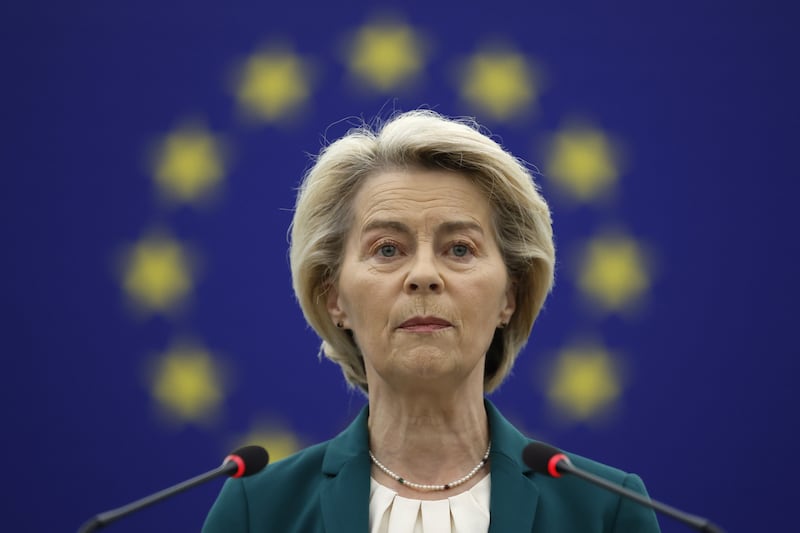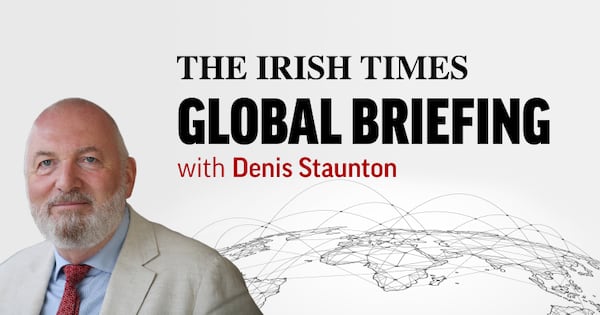There is a saying about new babies. When they sleep, you sleep. For the political commentariat in Washington DC, so it goes with covering the president of the United States. President Donald Trump’s tariff letter, addressed to European Commission president Ursula von der Leyen and dated March 11th was posted on his social media account in the early hours of Saturday morning.
It arrived at the end of yet another furiously busy week of competing issues, news stories and agendas, all of which revolved around Trump. On Friday, he visited Texas in the aftermath of the appalling flood disaster, which left at least 129 people dead and 170 missing, with Trump trenchantly dismissing questions over the efficiency of the federal response.
At the same time, an internal ideological war was brewing over the announcement by attorney general Pam Bondi that the files on Jeffrey Epstein would remain classified. Trump’s Maga base has long held as an article as faith that Trump would release the documents, and that their wildest conspiracy theories would be substantiated.
Elsewhere, Trump found time to once again pressurise Federal Reserve chairman Jerome Powell to either cut interest rates or resign. He received Binyamin Netanyahu in the White House on Monday. Sunday marked a year to the day since the assassination attempt as he gave a rally in Butler, Pennsylvania.
RM Block
So, Trump’s resumption of his role as Champion of Tariffs, completed before he flew to his gold club in Bedminster this weekend, generated a muted response from both the US political media and political opponents within the Democratic Party. That is partly because the shock value of Trump’s tariff threats has worn off.
While the figure mentioned in the strangely-worded series of letters sent to world leaders were alarming – a 30 per cent tariff on all European Union goods and, separately, a threat to impose a 200 per cent tariff on all pharmaceutical imports – the number that was deemed most significant was the August 1st deadline date. Both the markets and those among the public who cared interpreted the letter as a trade-deal extension disguised as a warning letter.
The 90-deals-in-90-days boast in the heady aftermath of the original “Liberation Day” tariff announcements has, to nobody’s surprise, not gone smoothly. Trump’s pleased observation that the phones “are ringing off the hook” in the White House, with world leaders desperately trying to make deals, unintentionally acknowledges that his administration cannot cope with the unprecedented task of striking new trade deals with the entire world at the same time.
And given the relentless eventfulness of every single day of the Trump White House, August 1st seems like a long way off. The tariff threat against the EU, with a similar hike against Mexico, may or may not materialise. If it does, only then it will become the big talking point in Washington. Only then, when a sharp and sudden rise in the price of European and Mexican imports on American shelves and car sales lots will Democrat politicians see the value in warning the public about what lies ahead.
The reply by Ursula von der Leyen achieved limited coverage in the US also. There are several reasons for this, one being that if you stopped 50 people in a random American town or city and asked them who Ursula von der Leyen is, the percentage of correct answers may represent a significant blow to European esteem. “The EU”, as a concept, rarely features in US discourse beyond financial media and business interests.

That may change in the weeks and months to come. EU imports to the US were more than $553 billion in 2022, according to figures release from the Office of the US Trade Representative, exceeding more than any other single country. The US imported $454 billion from Mexico in the same year. Both partners provide the US with about a third of their total imports. But for those not directly involved in trading, it’s an abstract concept.
Von der Leyen did offer a measured warning to Americans in highlighting the guaranteed hurt to “businesses, consumers and patients on both sides of the Atlantic”.
“At the same time, we are ready to safeguard EU interests on the basis of proportionate countermeasure.”
It was a calm retort, echoing that of Mexico’s president Claudia Sheinbaum who managed to talk Trump back from the brink during his initial bout of tariff-enthusiasm.
“We believe, based on what our colleagues discussed yesterday, that we will reach an agreement with the United States government and that, of course, we will achieve better conditions,” Sheinbaum told Bloomberg media.
There is that hope. But Trump’s impatience with the complexity and time span required to reshape global trading patterns is wearing thin. And he is ideologically wedded to his belief in that tariffs can, magically, become an all-win-and-no-pain elixir for the US economy and consumer.




















